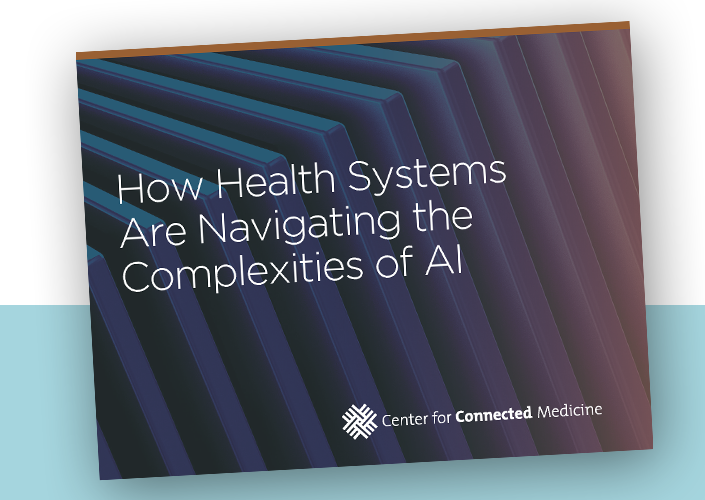Experts from UPMC, Intermountain, and HHS discuss expansion of virtual care with Aneesh Chopra at Top of Mind Online
One of six sessions from the Top of Mind Online virtual summit, “Modeling Health Care” looked at the impact of COVID-19 on business operations, policy, and financial modeling across the industry and how leaders are planning to carry the momentum forward.
Aneesh Chopra, President of CareJourney and former Chief Technology Officer of the United States, discussed these issues with three experts representing payer-provider organizations and the government:
- Pamela Peele, PhD, Chief Analytics Officer, UPMC Health Plan and UPMC Enterprises
- Jim Sheets, Chief Operating Officer, Specialty Based Care at Intermountain Healthcare
- Nick Uehlecke, Advisor, Immediate Office of the Secretary, Department of Health and Human Services
The panel discussed the explosion of telehealth and the industry’s responsibility to ask: Are providers and health systems getting to the right patients with telehealth services? Were the most chronically ill, most fragile, and those in greatest need of care accessing it online in the absence of the traditional in-person office visit?
Panelists agreed more must be done to reach those patients and others who may have technological access issues.
“What about the percentage of patients that were at risk and not accessing the system effectively?” said Chopra, who moderated the panel.
“The risk-bearing entities need to play a more active role, not only in the economics of delivering value-based care, but also thinking about outreach strategies,” Chopra said.
“The risk-bearing entities need to play a more active role, not only in the economics of delivering value-based care, but also thinking about outreach strategies,” Chopra said.
Focus on patients who benefit the most
Telemedicine can be very effective in helping providers manage the health of people with chronic conditions such as congestive heart failure. However, patients with the most severe conditions don’t always want to use telehealth service, Dr. Peele commented.
“It’s the younger, healthier, more educated patients who say yes to telemedicine, but it has a less marginal impact on them than the older, frailer, more severe patients,” Dr. Peele said. Health systems can do more to identify those patients, connect them to a physician, and make the technology easy to use. “We have to work hard to get it in the hands of the people who will have the highest marginal benefit from it.”
And who should be responsible for doing the work of reaching out to the patients and setting them up for successful telehealth visits, Chopra asked.
In a perfect world, both the payer and the provider would be aligned and share the responsibility because it is in the best interest of their community and the economy. “But in reality, it really comes down to who’s holding the financial risk,” Dr. Peele said.
[Top of Mind Online Keynote: What does the future of health care look like?]
Reducing unnecessary utilization
Uehlecke added telehealth could help to drive a reduction in unnecessary utilization of hospital services, such as entering an emergency department when what is needed are dental or mental health care, for example.
“But imagine immediate referrals to telehealth in those settings,” Uehlecke said. “I think there are many areas for which we can move forward and do it at a cost savings.”
There are few impediments to using telehealth to reach more people. Patients trust telehealth as a mode for discussing health concerns with their doctors. Many providers have come around to the benefits of virtual care. Reimbursement for telehealth has increased, which was long a stumbling block.
“The things that we should never go backwards on, and hopefully never will, are provider and consumer trust and reimbursement,” Uehlecke said.
[Top of Mind Online Panel: Executives reflect on ‘Leading and Learning Through Crisis’]
“We need all of that easy access technology that helps you manage your life and we need to bring that into health care,” Sheets said.
Importance of the digital front door
Regular and consistent use of telehealth, including remote monitoring, texting, asynchronous tools, and video visits, that moves care beyond episodic treatment will allow health systems to better manage the health of patients with chronic conditions. Better management should lead to reduced overutilization, Sheets said, “because people are going to get what they need when they need it in a regular, synergistic fashion.”
Another important component of this strategy, which both Intermountain and UPMC are investing in, is the health system’s digital front door, which leverages technology at the consumer’s fingertips to schedule appointments, view their health records, and receive other health information.
“We need all of that easy access technology that helps you manage your life and we need to bring that into health care,” Sheets said.
Learn more about the CCM’s Top of Mind program
The CCM’s Top of Mind program focuses on telehealth, artificial intelligence and revenue cycle management through a research report, webinar, virtual roundtables, and a virtual summit. Read about all the components of the program that seeks to examine innovation and digital health priorities in the year ahead.



